სასკოლო წრე " ჩვენ გვიყვარს კითხვა "
მოგესალმებით ჩემო ძვირფასო მოსწავლეებო. მინდა გაუწყოთ რომ ჩვენი სასკოლო წრე " ჩვენ გვიყვარს კითხვა " განაგრძობს ფუნქციონირებას ისევ 1 წლით,მუშაობას ვაგრძელებთ ჩვეული განრიგით. წრის დებულება უცვლელია.ახალმა წევრებმა გთხოვთ მოგვმართოთ განცხადებით.
გაეცანით წრის დებულებასა და პროგრამას.პატივისცემით წრის კურატორი: ეკატერინე ჩაჩიბაია
ახალი 2018-2019 წლის სასკოლო წრის მასალა მოცემულია სასკოლო წრე-2 გვერდზე.
სასკოლო წრე
ზესტაფონი, სკოლა ანაბასისი
სასკოლო წრე: „we love reading“
წრის შექმნის თარიღი: 2017 წლის 26 სექტემბერი
წრის ლოგო:
წრის კურატორი: ინგლისური ენის მასწავლებელი ეკატერინე ჩაჩიბაია
განაცხადი წრის წევრობაზე
სკოლა ანაბასისის სასკოლო კლუბ „we love reading“
კურატორს ეკატერინე ჩაჩიბაიას
ამავე სკოლის --V- კლასის
მოსწავლის ---------------------------
გ ა ნ ც ხ ა დ ე ბ ა
სურვილი მაქვს გავწევრიანდე სასკოლო წრე „we love reading“-ში. გთხოვთ დააკმაყოფილოთ ჩემი სურვილი.
განმცხადებელი:
თარიღი:
სასკოლო წრე „we love reading“
წესდება
1.ზოგადი დებულებები
1.1. ზესტაფონის სკოლა ანაბასისის სასკოლო წრე „we love reading“ დაფუძნებულიასკოლის ფარგლებში.
1.2 . წრე დაფუძნებულია განუსაზღვრელი ვადით.
1.3 . წრეს აქვს სახელწოდება და ლოგო.
1.4. წრის იურიდიული მისამართი: საქართველო, ზესტაფონი, ფარნავაზის ქ. 4ა
2. წრის მიზნები და ამოცანები:
2.1. მოსწავლეებში წიგნიერების დონის ამაღლება.
2.2. მოსწავლეთა ცოდნის გაღრმავება;
2.3. ცოდნის პრაქტიკულად გამოყენება.
2.4. კითხვის მოტივაციის გაზრდა;
2.5. ასაკობრივი დაინტერესების გათვალისწინებით მხატვრული ტექსტების მიწოდება.
2.6 კითხვის გემოვნების ჩამოყალიბება , სათანადო განწყობისა და ემოციური ფონის შექმნა
2.7 წიგნის კითხვის სიყვარულის გაღვივება. დადებითი და უარყოფითი პერსონაჟების შედარება. აქცენტის გაკეთება პერსონაჟის დადებით თვისებებზე. ლინგვისტურ ცნებებზე მუშაობა.
3. წრეში გაწევრიანება :
3.1. წრის წევრობა ნებაყოფლობითია;
3.2. წრის წევრი შეიძლება გახდეს სკოლის V კლასის მოსწავლე, რომელიც იზიარებს წრისმიზნებს.
3.3. წრის წევრობის მსურველმა უნდა მიმართოს წრეს წერილობითი ფორმით(განცხადებით და წევრობის მსურველის ანკეტის შევსებით).
3.4.წრის წევრებზე გაიცემა წრის წევრის მოწმობა.
3.5. წრეში გაწევრიანებაზე გადაწყეტილება მიიღება წრის კურატორის მიერ.
3.6. წრის წევრი ვალდებულია მიიღოს მონაწილეობა წრის საქმიანობაში, დაიცვასწესდების მოთხოვნები, შეასრულოს დავალებები და წრის მიერ მიღებულიგადაწყვეტილებები.
3.7.წრე პასუხისმგებელია მისი წევრის მხოლოდ იმ საქმიანობაზე, რომელიცდაკავშირებულია წრის საქმიანობასთან.
3.8. წრის წევრს უფლებამოსილება უწყდება პირადი განცხადების საფუძველზე, ასევეწრის საერთო კრების გადაწყვეტილებით როდესაც მისი საქმიანობა ეწინააღმდეგება წრისმიზნებს და უხეშად არღვევს აღნიშნული წესდების დებულებებს და სკოლისდამთავრების შემდეგ.
4.წრის სტრუქტურა,მართვა და გადაწყვეტილებების მიღება:
4.1. წრე შედგება წრის წევრებისგან, რომელთა რაოდენობაა არაუმეტეს 15 მოსწავლისაა;
4.2. წრეს შეიძლება ჰყავდეს კურატორი, რომლის უფლებამოსილებაა უხელმძღვანელოსწრის საქმიანობას, ერთპიროვნულად წარმოადგენოს წრე მესამე პირთან/პირებთანურთიერთობისას, უხელმძღვანელობს წრის მიერ განსახორციელებელი პროექტებისა დაპროგრამების შემუშავებასა და რეალიზაციას. დანიშნოს და გაათავისუფლოს წრისწევრები, მიიღოს სხვა გადაწყვეტილებები საწესდებო მიზნების მისაღწევად.
4.3. ხელმძღვანელი თავისი კომპეტენციის ფარგლებში: ხელმძღვანელობს წრისსაქმიანობას, ერთპიროვნულად.
4.4. წრის საერთო კრება უფლებამოსილია ხმათა უმრავლესობით : დამტკიცოს სამოქმედოგეგმა, დაამტკიცოს წრის წესდება, აირჩიოს წრის ლიდერი.
4.5 წრის ლიდერი ირჩევა 1 სასწავლო წლის ვადით.
4.6 ერთი და იგივე კანდიდატი წრის ლიდერად შეიძლება არჩეულ იქნას 2 ვადით.
4.6 ერთი და იგივე კანდიდატი წრის ლიდერად შეიძლება არჩეულ იქნას 2 ვადით.
5. წრის მუშაობა
5.1. წრე იკრიბება არანაკლებ თვეში ერთჯერ,
5.2. წრის შეკრებები ფორმდება ოქმით.
6. წრის რეორგანიზაცია და საქმიანობის შეწყვეტა:
6.1. წრის რეორგანიზაცია (შეერთება, მიერთება, გამოყოფა გარდაქმნა)ხორციელდება ამ დებულებით.
6.2 წრის ლიკვიდაცია ხდება: საერთო კრების გადაწყვეტილებით ან მიზნებისმიღწევის შემთხვევაში.
7. დასკვნითი დებულება:
7.1. წინამდებარე წესდება ძალაში შედის წრის ამოქმედებისთანავე.
7.2. ამ წესდებაში ცვლილებები შეიძლება შეტანილ იქნეს მხოლოდ საერთო კრებისგადაწყვეტილებით.
8. შედეგი: ჩამოყალიბდება კარგ მკითხველად ,მოსწავლეებს განუვითარდებათ ანალიტიკური აზროვნების უნარი. წაკითხულიდან გამოყოფენ დადებით და უარყოფით მომენტებს. გაუჩნდებათ წიგნის კითხვის სურვილი.
ზესტაფონი, სკოლა ანაბასისი
2017 წლის 26 სექტემბერი
სასკოლო წრე „we love reading“ სამუშაო გეგმა
№
|
აქტივობის დასახელება
|
განხორციელების თარიღი
|
შენიშვნა
|
1
|
წრის წევრების შეკრება და ლიდერის და მისი მოადგილის არჩევა
|
27.09.2017
|
ხმათა უმრავლესობით მოსწავლეებმა აირჩიეს წრის ლიდერად ქეთა მუშკუდიანი ხოლო მის მოადგილედ ანი ჩუბინიძე.
|
2
|
უჩვეულო ფრინველები( კივი,პინგვინი,სირაქლემა)
|
17.10.2017
|
შეისწავლიან სახალისო ტესტებს მათ შესახებ,ცოდნას გაიღრმავებენ ასევე სახალისო კროსვორდების შევსებით.(გაიღრმავებენ ცოდნას მრავლობით რიცხვში)
|
3
|
გიორგობა საქართველოში
|
17.11.2017
|
ექსკურსია წმინდა გიორგის სახელობის ეკლესიაში.
გაეცნობიან ადაპტირებულ ტექსტს წმინდა გიორგის ცხოვრებაზე
|
4
|
მცენარეები (ფინიკი,ბრინჯი,ჰიაცინტები,ფორთოხალი)
|
05.12.2017
|
მოსწავლეები გაეცნობიან მცენარეების სასარგებლო ნიშან -თვისებებს,მათ მოხმარებას.განვიხილავთ ტექსტში მოცემულ მარტივ დროებს
|
5
|
საახალწლო ტრადიციები
|
26.12.2017
|
წაიკითხავენ ადაპტირებულ ტესტებს საახალწლო ტრადიციებზე,გაეცნობიან მითებს ლაპლანდიასა და სანტა -კლაუსზე,შეადარებენ ქართულ მეკვლესა და თოვლის ბაბუას.(გრამატიკაში დაამუშავებენ დაგეგმილ და დაუგეგმავ მომავალს)
|
6
|
მუსიკა გვეხმარება განტვირთვაში
|
23.01.2018
|
წაიკითხავენ ტექსტებს და გაეცნობიან მუსიკის სხვადასხვა მიმდინარეობებს(შეადარებენ ერთმანეთს მარტივსა და განგრძობით დროებს)
|
7
|
სპორტი ჩვენს ცხოვრებაში
|
13.02.2018
| |
8
|
მზადება დედის დღისა და ქალთა დღისადმი
|
27.02.2018
|
მოსწავლეები დაამზადებენ მისალოც ბარათებს დედისათვის.
რომელიც შესაბამისად გაორმდება ლექსებითადა გამონათქვამებით
|
9
|
ცნობილი ანდაზები,
|
20.03.2018
|
თითოეულ ანდაზაზე ბავშვები შექმნიან პატარა მოთხრობას ან ჩანახატს
|
10
|
საყვარელი ზღაპარი
|
17.04.2018
| |
11
|
ჩემი საუკეთესო მეგობარი
|
1.05.2018
| |
12
|
ბავშვთა დაცვის დღე
|
01.06.2018
|
საბავშვო ღონისძიებაში მონაწილეობის მიღება
|
13
|
საზაფხულო არდადეგები
|
20.05.2018
| |
საინიციატივო ჯგუფი:
სკოლა ანაბასისის V კლასისი მოსწავლეები
წრის მეურვე : ეკატერინე ჩაჩიბაია
სასკოლო წრის “ we love reading “ წევრები:
1.აბულაძე დავითი
2.მუშკუდიანი ქეთი
3.მახათაძე ჯაბა
4.მახათაძე ანი
5.სახეჩიძე ანა
6.შათირიშვილი აკაკი
7.ჩუბინიძე ანა
8.ხოჯანაშვილი ლიზი
9.რობაქიძე ნიკოლოზი
10.გელაშვილი ნია
წრის ლიდერი: ქეთა მუშკუდიანი
ლიდერის მოადგილე: ანი ჩუბინიძე
27.09.2017
სასკოლო წრის " we love reading "-ის წევრების შეკრება
წრის ლიდერისა და მოადგილის არჩევა
ხმის უმრავლესობით წრის წევრებმა ლიდერად აირჩიეს ქეთა მუშკუდიანი,მოადგილედ კი ანი ჩუბინიძე.
გაეცნენ წრის მუშაობის გეგმას და თემატურ მასალას რომელიც დამუშავდება მთელი წლის მანძილზე.
17.10.2017
UNUSSUAL BIRDS AND ANIMALS
დღევანდელი სასკოლო წრის შეხვედრა მეტად ხალისიანი და საინტერესო
აღმოჩნდა წრის წევრებისათვის,პატარები გაეცნენ უჩვეულო ფრინველებსა და ცხოველებს,შეისწავლეს მათთვის უცნობი ფაქტები ახალ ზელანდიაში მობინადრე ფრინველ კივზე,სირაქლემაზე--მათთვის გასაოცარი იყო როცა შეიტყვეს რომ მას სხვაგვარად აქლემის ფრინველასც უწოდებენ,იმსჯელეს თუ რა იყო საბაბი სირაქლემაზე ამ სახელის წოდებისა,გაეცნენ პინგვინს,უყურეს ვიდეო ფილმები,რომლებზედაც შემდგომში განახორციელეს პროექტიც,შეისწავლეს ახალი სიტყვები,განამტკიცეს შესაბამისი გრამატიკული წესებიც.ბოლოს კი თვით შექმნეს საინტერესო და სახალისო კითხვები ცოდნის დონის ასამაღლებლად ამ უჩვეულო ფრინველებზე.
Kiwis – The National Bird of New Zealand
The small, isolated island of New Zealand is home to many unusual animals, including the kiwi. These small birds are the national bird of New Zealand and this is the only place in the world you’ll find them, outside of zoos.
Kiwis have very long beaks. The beaks have nostrils at the tip, which help the birds find food. The kiwis eat worms, spiders and other bugs. Kiwis have wings, but they are so small that the birds can’t fly. Because kiwi can’t fly, they are easily hunted by cats, stoats and dogs. Kiwis will scratch, kick or run away from predators.
Fun Facts about Kiwis for Kids
- Kiwis have a strong, musty smell. Predators can smell them from faraway.
- Kiwis have brown feathers to blend into the ground.
- These small birds are nocturnal. They sleep in burrows under the ground or old logs during the day.
- Kiwis are about the size of a chicken. They lay huge eggs, though. The eggs can weigh 1 pound each!
- Both males and females sit on the eggs. When the chicks hatch, they can hunt for their own food.
Both males and females sit on the eggs. They sleep in burrows under the ground or old logs during the day.
Kiwi Vocabulary
- Isolated: alone, faraway
- Predator: an animal that hunts other animals.
- Musty: stale, damp, moldy
- Huge: very large
Learn More All About Kiwis
Watch this intriguing documentary video about them:
A documentary about the nature of kiwis.
Kiwi Q&A
Question: Why are kiwis so unusual?
Answer: Kiwi birds have feathers that seem more like hairs. They also have a strong sense of smell, and no tail. In some ways, they seem more like a mammal than a bird.
———————————–
Question: Are kiwi birds cute and shy?
Answer: Kiwi birds are actually very aggressive. They’ll attack other birds entering their territory and fight back against predators.
The ostrich is the largest and heaviest living bird. As its species name, camelus, suggests, the ostrich was once known as the “camel bird” because of its long neck, prominent eyes, and sweeping eyelashes, as well as its jolting walk. Also, like camels, the ostrich can tolerate high temperatures and go without water for long periods of time.
As it is so heavy, this flightless bird that can never take to the skies; instead, it’s built to run. Its long, thick, and powerful legs can cover great distances without much effort, and its feet have only two toes for greater speed.
Ostriches can sprint in short bursts up to 43 miles per hour (70 kilometers per hour), and they can maintain a steady speed of 31 miles per hour (50 kilometers per hour). Just one stride can be 10 to 16 feet (3 to 5 meters) long—that’s longer than many rooms! When danger threatens, ostriches can escape pretty easily by running away. Ostrich chicks can run at speeds approaching 35 miles per hour (56 kilometers per hour) at just a month old!
Ostriches can sprint in short bursts up to 43 miles per hour (70 kilometers per hour), and they can maintain a steady speed of 31 miles per hour (50 kilometers per hour). Just one stride can be 10 to 16 feet (3 to 5 meters) long—that’s longer than many rooms! When danger threatens, ostriches can escape pretty easily by running away. Ostrich chicks can run at speeds approaching 35 miles per hour (56 kilometers per hour) at just a month old!
If they can't fly, why do they have wings? For one thing, ostriches hold their wings out to help them balance when they run, especially if they suddenly change direction. Their main use, though, along with the tail feathers, is for displays and courtship. To show dominance, an ostrich holds its head up high and lifts its wings and tail feathers; to show submission, the head, wings, and tail droop down.
Unlike most birds’ feathers, ostrich feathers are loose, soft, and smooth. They don’t hook together the way feathers of other birds do, giving ostriches a "shaggy" look. The feathers can also get soaked in the rain, because ostriches do not have the special gland many birds have to waterproof their feathers while preening. Adult male ostriches have striking black-and-white plumage; immature birds and adult females have grayish brown feathers.
Ostriches live in groups, which helps with defense. With their long necks and keen vision, they can see for great distances, so in a group at least one of them is likely to notice danger approaching. Ostriches sometimes gather in a large flock of 100 or more, but most flocks are smaller, usually about 10 birds or just a male and female pair. The groups have a pecking order, with a dominant male that establishes and defends a territory, a dominant female called the "main hen," and several other females. Lone males may also come and go during breeding season.
Contrary to the popular myth, ostriches do not bury their heads in the sand! When an ostrich senses danger and cannot run away, it flops to the ground and remains still, with its head and neck flat on the ground in front of it. Because the head and neck are lightly colored, they blend in with the color of the soil. From a distance, it just looks like the ostrich has buried its head in the sand, because only the body is visible. Some ostrich eggs are lost to hyenas, jackals, and even Egyptian vultures, which break open eggs by dropping stones on them. But when an adult ostrich is threatened, it attacks with a clawed foot that delivers a kick powerful enough to kill a lion.
FUN FACTS
An ostrich’s eye is almost 2 inches (5 centimeters) across—the largest eye of any land animal.
Weighing in at more than 3 pounds (1,500 grams), the ostrich egg is the largest egg—in fact, the largest single cell—found on our planet today. Only dinosaurs produced larger eggs.
One ostrich egg is equivalent to the weight of about 24 chicken eggs.
The ostrich is the only bird that has two toes: all other birds have three or four.
BASIC FACTS ABOUT PENGUINS
Penguins are aquatic, flightless birds that are highly adapted to life in the water. Their distinct tuxedo-like appearance is called countershading, a form of camouflage that helps keep them safe in the water. Penguins do have wing-bones, though they are flipper-like and extremely suited to swimming. Penguins are found almost exclusively in the southern hemisphere, where they catch their food underwater and raise their young on land.
DIET
Staples: Krill, fish and squid.
In general, penguins closer to the equator eat more fish and penguins closer to Antarctica eat more squid and krill.
In general, penguins closer to the equator eat more fish and penguins closer to Antarctica eat more squid and krill.
POPULATION
Did You Know?
Larger penguin species are found in colder climates where their large body mass enables them to cope with the conditions, while smaller penguins inhabit warmer climes.
The penguin species with the highest population is the Macaroni penguin with 11,654,000 pairs. The species with the lowest population is the endangered Galapagos penguin with between 6,000-15,000 individuals.
RANGE
Penguins can be found on every continent in the Southern Hemisphere from the tropical Galapagos Islands (the Galapagos penguin) located near South America to Antarctica (the emperor penguin).
BEHAVOIR
Penguins can spend up to 75% of their lives in the water. They do all of their hunting in the water. Their prey can be found within 60 feet of the surface, so penguins have no need to swim in deep water. They catch prey in their beaks and swallow them whole as they swim. Some species only leave the water for molting and breeding.
Did You Know?
The emperor penguin breeds in the coldest environment of any bird species; air temperatures may reach -40° (F/C), and wind speeds may reach 89 miles per hour (144 km/hr)!
Penguins are social birds. Many species feed, swim and nest in groups. During the breeding season, some species form large groups, or “rookeries”, that include thousands of penguins. Each penguin has a distinct call, allowing individuals to find their mate and their chicks even in large groups.
REPRODUCTION
Mating Season: Varies depending on the species, though most breed during spring and summer.
Incubation: Varies from 1 month-66 days depending on the species.
Number of offspring: King and emperor penguins lay one egg. All other species of penguin lay two eggs.
Incubation: Varies from 1 month-66 days depending on the species.
Number of offspring: King and emperor penguins lay one egg. All other species of penguin lay two eggs.
http://youtube.com/watch?v=gzYjSVyxPxc
20.11.2017
გიორგობა--მეტად მნიშვნელოვანი და ყველასათვის საყვარელი დღესასწაულია საქართველოში.ცნობილია რომ მამაკაცებში სწორედ ეს სახელი ჭარბობს წმინდა გიორგის საპატივცემულოდ,დღევანდელი ჩვენი შეხვედრაც წრის წევრების სურვილის გათვალისწინებით გიორგობას ეხებოდა.
მოსწავლეები გაეცნენ წმინდა გიორგის ცხოვრებას,პარალელი გაავლეს თუ როგორ აღნიშნავენ საქართველოში და ინგლისში გიორგობას,აღნიშნეს რომ ორივე ქვეყნის წმინდანი და მფარველად წმინდა გიორგი ითვლება.შეისწავლეს ლეგენდა წმინდა გიორგისა და ურჩხულის შესახებ,გაეცნენ ვიდეო ფაქტებს.ყველაზე საინტერესო ფაქტი კი ასევე აღმოჩნდა როცა შეიტყვეს რომ საქართველოში 365 ეკლესია არსებობს წმინდა გიორგის სახელობის.წრის მუშაობის შემდეგ კი სკოლასთან ახლოს არსებულ წმინდა გიორგის საელობის ეკლესიას ვესტუმრეთ.
St Georges Day---23 November
What and when is St. George's Day?
St Georges' Day is on 23 November.
St George's Day is celebrated in Georgia on 23 November, in honour of St George, the patron saint of Georgia.
What does the flag of St George look like?
This is the flag of St George is also the flag of England
Who was St St George?
A story dating back to the 6th century tells that St George rescued a maiden by slaying a fearsome fire-breathing dragon. The Saint's name was shouted as a battle cry by English knights who fought beneath the red-cross banner of St George during the Hundred Years War (1338-1453).
The Real St George
| ||||||||
|
Saint George is popularly identified with England and English ideals of honour, bravery and gallantry, but actually he wasn’t English at all. Very little is known about the man who became St George.
Quick Facts about St George
When the pagan Emperor Diocletian started persecuting Christians, St. George pleaded with the Emperor to spare their lives. However, St. George's pleas fell on deaf ears and it is thought that the Emperor Diocletian tried to make St. George deny his faith in Christ, by torturing him. St George showed incredible courage and faith and was finally beheaded near Lydda in Palestine on 23 April, 303. In 1222, the Council of Oxford declared April 23 to be St George’s Day and he replaced St Edmund the Martyr as England’s patron saint in the 14th century. In 1415, April 23 was made a national feast day.
Patron Saint
St George is patron saint not only of England but also of Aragon, Catalonia, England, Ethiopia, Georgia, Greece, Lithuania, Palestine, Portugal, and Russia, as well as the cities of Amersfoort, Beirut, Bteghrine, Cáceres, Ferrara, Freiburg, Genoa, Ljubljana, Gozo, Pomorie, Qormi, Lod and Moscow.St George is also patron saint of scouts, soldiers, archers, cavalry and chivalry, farmers and field workers, riders and saddlers, and he helps those suffering from leprosy, plague and syphilis. How will you be celebrating St George's Day?
|
ექსკურსია წმინდა გიორგის სახელობის ეკლესიაში
05.12.2017
PLANTS
დღევანდელი სასკოლო წრის შეხვედრა საინტერესო
აღმოჩნდა წრის წევრებისათვის,პატარები გაეცნენ მათთვის ნაკლებად ცნობილ და საკმაოდ ნაცნობ მცენარეებს,მხოლოდ მათთვის ჯერ კიდევ უცხო თვისებებით.გაეცნენ და შეისწავლეს მათთვის უცნობი ფაქტები ჰიაცინტებზე,ფინიკსა და ბრინჯზე და რა თქმა უნდა პატარების საყვარელ ხილზე ფორთოხალზე-უყურეს სახალისო საგანმანათლებლო ვიდეო ფილმებს,რომლებზედაც შემდგომში განახორციელეს პროექტიც,შეისწავლეს ახალი სიტყვები,განამტკიცეს შესაბამისი გრამატიკული წესებიც.ბოლოს კი შეავსეს კროსვორდი მცენარეების თემატიკაზე,რამაც საშუალება მომცა უკეთესად შემეჯამებინა დღევანდელი გაკვეთილი.
Palm trees are a botanical family of perennial lianas, shrubs, and trees. They are in the family Arecaceae. They grow in hot climates.
Well known palm trees are:
There are about 2600 species of palm trees, most of them living in tropical, subtropical, and warm temperate climates.
Palms are one of the best known and most widely planted tree families. They have held an important role for humans throughout much of history. Many common products and foods come from palms. They are often used in parks and gardens that are in areas that do not have heavy frosts.
In the past palms were symbols of victory, peace, and fertility. Today palms are a popular symbol for the tropics and for vacations.
Shapes and flowers
Where palms live ---------------------------Most palms are a straight, unbranched stem, but sometimes a branching stem, or even a creeping vine, such as the rattan. They have large evergreen leaves that are either 'fan-leaved' or 'feather-leaved' and arranged in a spiral at the top of the trunk. The leaves have a tubular sheath at the base that usually splits open on one side when it is grown. The flowers grow on an inflorescence, a special branch just for carrying the great number of tiny flowers. The flowers are generally small and white, and are star-shaped. The sepals and petals usually number three each. The fruit is usually a single seed surrounded by flesh. The familiar coconut is the seed of a large fruit. Some kinds may contain two or more seeds in each fruit.
Over two-thirds of palms live in tropical forests, where some species grow tall enough to form part of the canopy and other shorter palms form part of the understory. Some kinds form pure stands in areas with poor drainage or regular flooding. Other palms live on tropical mountains above 1000 meters, Palms may also live in grasslands and scrublands, usually where there is water, and in desert oases. A few palms are adapted to extremely basic lime soils, while others are similarly adapted to very acidic soils.
Palms in danger
Like many other plants, some palms are in danger of dying out because of human activity. The greatest dangers are from Increasingly large cities, mining, and turning forests into farmland. The harvesting of heart of palm for food also poses a threat, because it comes from the inner core of the tree, and harvesting it kills the tree. The use of rattan palms in furniture has caused a big fall in the number of rattan palms, as they are collected from the wild instead of being farmed. The sale of wild seeds to growers and collectors is another threat.
At least a hundred kinds are in danger, and nine kinds are said to have recently died out
It is very hard to save palm seeds because they are killed by cooling them, which is the normal way of keeping rare seeds for the future. Also, planting rare kinds in parks can never truly recreate the wild areas they come from, and the plants may not do well in these parks.
The Palm Specialist Group of the World Conservation Union (IUCN) started in 1984, supported by the WWF. The group gathered a lot of information from different parts of the world. An action plan to save rare palms was made by this group in 1996.
Palm farming and use
Date palms in history
Human use of palms is as old as, or even older than, civilization itself, starting with the growing of date palms by Mesopotamians and other Middle Eastern peoples 5000 years or more agoThe Date Palm had a great effect on the history of the Middle East. Historian W.H. Barreveld wrote:
- "Had the date palm not existed, the expansion of the human race into the hot and barren parts of the "old" world would have been much more restricted. The date palm not only provided a concentrated energy food, which could be easily stored and carried along on long journeys across the deserts, it also created a more amenable habitat for the people to live in by providing shade and protection from the desert winds. In addition, the date palm also yielded a variety of products for use in agricultural production and for domestic utensils, and practically all parts of the palm had a useful purpose"
Palms used for food and drink
Apart from the well-known coconut and date, there are other kinds of food from palms. Palm oil, Sago, heart of palm and palm wine are all eaten or drunk in different parts of the world. Palm oil is used in everything, from cosmetics to food ingredients.
The palm as a symbol
The palm branch was a symbol of triumph and victory in Roman times. The Romans rewarded champions of the games and celebrated success in war with palm branches.
Jews also had a tradition of carrying palm branches during festive times.
The motto of the University of Southern California is Palmam qui meruit ferat, which means in Latin, "Let him bear the palm who has deserved it".
Palms appear on the flags and seals of several countries where they are native, including those of Haiti, Guam, Florida, South Carolina, and Samoa.
Christianity
Early Christians used the palm branch to symbolize the victory of the faithful over enemies of the soul, as in the Palm Sunday festival celebrating the triumphal entry of Jesus into Jerusalem.
In Christian art, martyrs were usually shown holding palms representing the victory of spirit over flesh, and it was widely believed that a picture of a palm on a tomb meant that a martyr was buried there. Origen calls the palm "the symbol of victory in that war waged by the spirit against the flesh. In this sense it was especially applicable to martyrs, the victors par excellence over the spiritual foes of mankind; hence the frequent occurrence in the Acts of the martyrs of such expressions as "he received the palm of martyrdom".
THE WATER HUACINTH
Description


Non-Native
Water hyacinth is native to South America but has naturalized much of the Southern U.S.
Water hyacinth is a free-floating perennial plant that can grow to a height of 3 feet. The dark green leave blades are circular to elliptical in shape attached to a spongy, inflated petiole. Underneath the water is a thick, heavily branched, dark fibrous root system. The water hyacinth has striking light blue to violet flowers located on a terminal spike. Water hyacinth is a very aggressive invader and can form thick mats. If these mats cover the entire surface of the pond they can cause oxygen depletions and fish kills. Water hyacinths should be controlled so they do not cover the entire pond.
Submerged portions of all aquatic plants provide habitats for many micro and macro invertebrates. These invertebrates in turn are used as food by fish and other wildlife species (e.g. amphibians, reptiles, ducks, etc.). After aquatic plants die, their decomposition by bacteria and fungi provides food (called “detritus” for many aquatic invertebrates. Water hyacinth has no known direct food value to wildlife and is considered a pest species.
Did you know?:
- The flowers are used to create a tonic for horses that is rubbed into the horses skin.
- Given a good steaming or boiling the plant’s flower stalks, buds, and young leaves can be eaten. Water hyacinth is an ingredient in Taiwanese and Javanese cooking. (if ingested uncooked it will cause sever skin irritation)
- The plant is rich in carotene.
- Water hyacinth seeds stay viable up to 30 years.
- Water hyacinth is used in perfume and cologne products.
- It can be used as organic fertilizer and animal feed.
- It can be processed to make paper, rope, handbags, even furniture.
- It absorbs lead, mercury, and carcinogens when used for remediation purposes.
- Because of its amazing biomass it can be used to create fuels!
The Rice
Rice Facts
|
| Interesting Rice Facts: |
|---|
| Size of rice depends on the variety. It usually grows from 3.3 to 5.9 inches in height. |
| Rice has elongated, slender leaves that can reach 20 to 39 inches in length. |
| Rice develops small flowers collected in pendulous inflorescence. Flowers are pollinated by wind. |
| Seed of rice is edible part of the plant that is widely used in human diet. |
| Rice can be white, yellow, golden, brown, purple, red or black in color. All varieties of rice are divided in three major categories based on the size of grain: long, medium and short. Medium and short types are sticky due to high content of starch. |
| Rice is staple food in most countries in the world. 90% of global rice is produced and consumed in Asia. |
| Most rice is consumed in Burma: 500 pounds of rice per person each year. Americans consume 20 pounds of rice per person per year. |
| Rice is rich source of sugars, proteins and vitamins of the B group. |
| Rice need to be cooked before consumption. Grains of rice swell and become three times bigger during cooking. Rice can be consumed as a part of numerous sweet and salty dishes. |
| Depending on the culture, rice can be consumed with fork (western societies), chopsticks (China, Korea and Japan) or with hands (India). |
| Raw rice is used in the production of alcoholic beverages such as rice wine and sake, or in the production of rice milk. |
| Scientists created genetically altered type of rice that contains beta-carotene. This type of rice is golden in color. Goal of this project is to prevent vitamin deficiency in areas with low level of vitamin A in diet. |
| Rice symbolizes life and fertility. It is often thrown above the heads of newlyweds after wedding ceremony to ensure happy life filled with children. |
| Rice can be used as a piece of jewelry. Even though small in size, grain of rice can be personalized with individual's name. That grain can be worn on a necklace after it is placed in the glass tube. |
| Most types of rice are annual plants (live only one year). Several types of rice can survive and produce grains for up to 30 years. |
THE ORANGE
An orange is a type of citrus fruit which people often eat. Oranges are a very good source of vitamins, especially vitamin C. Orange juice is an important part of many people's breakfast. The "sweet orange", which is the kind that are most often eaten today, grew first in Asia but now grows in many parts of the world.
Oranges are round orange-coloured fruit that grow on a tree which can reach 10 metres (33 ft) high. Orange trees have dark green shiny leaves and small white flowers with five petals. The flowers smell very sweet which attracts many bees.
An orange has a tough shiny orange skin. Inside, the fruit is divided into "segments", which have thin tough skins that hold together many little sections with juice inside. There are usually ten segments in an orange, but sometimes there are more or less. Inside each segment of most types of orange there are seeds called "pips". Orange trees can be grown from pips, but some types of orange trees can only be grown from "cuttings" (a piece cut off a tree and made to grow roots). The segments and the skin are separated by white stringy fibrous material called "pith". In most types of oranges, the skin can be peeled off the pith, and the segments can be pulled apart with the fingers to be eaten. In some oranges it is hard to take the skin off. Orange skin is often called "orange peel".
Oranges are an important food source in many parts of the world for several reasons. They are a commonly available source of vitamin C. They last longer than many other fruits when they are stored. They are easy to transport because each orange comes in its own tough skin which acts as a container. They can be piled into heaps or carried in bags, lunchboxes and shipping containers without being easily damaged.
The colour orange takes its name from the fruit. The word "orange" is unusual because it is one of only a few English words that does not rhyme with anything.
Orange Facts for Kids
- The orange is a citrus fruit and is a hybrid of the pomelo and mandarin.
- Oranges have been grown since ancient times and originated in Southeast Asia.
- As of 2010, Brazil grows one third of all the world’s oranges.
- California and Florida are large producers of oranges in the US.
- Around 85% of all oranges produced are used for juice.
- Marmalade is orange jam.
- Oranges have a high amount of vitamin C.
- Oranges are domesticated so you are unlikely to find them growing naturally in the wild.
- Because oranges do not spoil easily and are full of vitamin C during the years of world exploration sailors planted orange and other citrus trees along trade routes to prevent scurvy which is a disease that develops from a deficiency of vitamin C.
- It is believed that Christopher Columbus was the first to bring orange seeds to America during his second voyage to the region in 1493.
- There are now over 600 varieties of oranges worldwide.
- There are typically ten segments inside an orange.
- Ideal conditions for growing oranges are in sub-tropical areas that have good amounts of sunshine yet moderate to warm temperatures (15.5°C - 29°C (60°F - 84 °F).
- Orange peel can be used by gardeners to sprinkle over vegetables as a slug repellent.
- The white orange blossom, is the state flower of Florida. It is highly fragrant and has long been used in weddings as cake decoration, in bridal bouquets and in head wreaths. The blossom essence is an important component in the making of perfume and the petals can also be made into "orange blossom/flower water".
26.12.2017
NEW YEAR TRADITION
დღევანდელი ჩვენი გაკვეთილი საახალწლო ტრადიციებს ეხებოდა.
მოსწავლეები გაეცნენ საახალწლო ტრადიციებს სხვადასხვა ქვეყნებში.მოახდინეს პარალელის გავლება საქართველოზე,წაიკითხეს პატარა მოთხრობები საახალწლო თემატიკაზე.განახორციელეს პროექტი და სახალისოდ წარადგინეს.
NEW YEAR TRADITIONS-A DAY OF FAMILY FUN
New Year’s Eve has changed quite a bit since I became a mother, but so far the girls are so young that the night is still largely an adult night. They are soundly tucked in their beds before most of the New Year’s Eve festivities begin, and it is fun to spend some quality time with adults. However, we do have a lot of kid-centered fun on New Year’s Day. This year I decided to take some of our traditional activities and combine them with a few new ones that I know the girls will enjoy. Many of them could be done on either New Year’s Eve or New Year’s Day.
1. Year Pancakes: We will make pancakes and use number cookie cutters to make the new year. Our New Year’s Day will include 13 bags, inspired by the Countdown Bags from Sweet Blessings. The girls will open one each hour from the time they wake up until the time they go to bed. So far I am planning the following activities…
2. Story Time: We will read New Year’s Day, a simple nonfiction that shares some facts about New Year’s Day.
NEW YEAR TRADITIONS-A DAY OF FAMILY FUN

1. Year Pancakes: We will make pancakes and use number cookie cutters to make the new year. Our New Year’s Day will include 13 bags, inspired by the Countdown Bags from Sweet Blessings. The girls will open one each hour from the time they wake up until the time they go to bed. So far I am planning the following activities…
2. Story Time: We will read New Year’s Day, a simple nonfiction that shares some facts about New Year’s Day.
3. Year Collage: The girls will get cardboard number cutouts and decorate them with paint, gems, and glitter to make a sparkly decoration for our day.
4. Take Down Christmas Decorations: In truth, I will start slowly taking down decorations in the house throughout the week between Christmas and New Year’s, but on New Year’s Day as a family we will take the ornaments off of our Christmas tree and pack everything away for next year. Both girls really enjoy helping put up and take down decorations, and it is a helpful way for us to say goodbye to the holiday season.
5. Rose Parade: We LOVE parades, and the Rose Parade on New Year’s Day is just beautiful. I also plan to buy some real roses for the girls to play with and explore while we watch the parade. I think they will love to smell them and feel the texture of the petals. (Of course, I will trim any thorns)
6. Twelve Grapes: While we won’t be able to do this at midnight, we will enjoy 12 grapes with our lunch at noon and talk a little about this tradition.
8. Family Letter: Each year we write a brief family letter that recaps some of the major events that happened in our lives in the past year. We also include something that each of us hopes for the year to come. At this early age, I try to get Lovey to think of something she hopes to learn to do in the coming year. As the girls get older we will include a place they would like to go, something they would like to learn, and a way they hope to help others in the coming year. We will also take some time to read the letters from previous years.
9. Paper Bowl Noisemaker: We will make these easy noisemakers that I found from Red Ted Art’s 30 New Year’s Eve Crafts & Activities for Kids.
10. Ball Drop & Dance Party: We will dress up in our “fancy” dresses and play clothes. Then we will replay the New Year countdown and ball drop. We’ll use our noisemakers and have a bit of a dance party.
11. Dinner with Black-Eyed Peas and New Year’s Toast: Our family dinner with include black-eyed peas and New Year’s toast with grape juice for the girls.
12. New Year’s Party Bath: Our Grinch Bath is still a topic of discussion around here, so I know the girls will love another special bath. We will grab a few things from the Dollar Tree and put together a simple New Year’s Party Bath inspired by Bath Activities for Kids.
13. Story Time: Before the girls go to bed we will read Squirrel’s New Year’s Resolution. It is a sweet story about friendship and the tradition of making resolutions.
January 1 - New Year- is the first in calendar and the most favorite holiday in Russia. Everybody celebrates it. It is bigger than Christmas. This is the time to make wishes and give presents to friends and relatives.
Children find their presents under the Christmas tree, which Grandfather Frost (Russian Santa Clause) put on New Year’s Eve. During a week before December 31st kids at kindergartens and Elementary schools have New Year’s parties, where they meet Grandfather Frost and his granddaughter Snow maiden.
Adults gather in big groups and celebrate New Year with delicious meals, fireworks, and a lot of noise. There is another tradition - shortly before 12 PM, everybody stands with a glass of campaign and listens to the New Year’s Speech by the President of Russia. When the Big Kremlin Chimes struck midnight, everybody is supposed to make a wish. Then people clink their glasses, say ‘Happy New Year!’, kiss each other and the party continues till 4, 5, 6… in the morning.
ვამზადებთ საახალწლო ბარათებს
23.01 .2018
Music is a great way to relax
დღევანდელი ჩვენი სასკოლო წრის შეხვედრა საკმაოდ ხალისიანი და ინტელექტუალური აღმოჩნდა,ჩვენი თემა მუსიკა როგორც განტვირტვის საუკეთესო საშუალება იყო.მოსწავლეები გაეცნენ მუსიკის ისტორიას,მის მიმდინარეობებს,შეისწავლეს საკმაოდ საინტერესო ფაქტები მუსიკის სამყაროდან.ჩავატარეთ ინტელექტუალური შეჯიბრი ახლად გაცნობილ მასალაზე,
ტექსტები გარკვეულ წილად დატვირთული იყო გრამატიკულად,რასაც კითხვის მომენტში ვიაზრებდით და ვახდენდით 2 დროის აწმყო მარტივისა და განგრძობითი დროის ერთმანეთან შედარებას,ბოლო 15 წუთი კითხვაზე პასუხების გახცემას დავუთმეტ.მოსწავლეები ერთმანეთს უსვამდნენ კითხვებს წაკითხული მასალიდან და ცდილობდნენ მოპასუხის არასწორი პასუხის გაცემის შემთხვევაში მიეთითებიათ თუ სად ეწერა სწორი პასუხი და რაძე უნდა გაემახვილებიათ ყურადრება კითხვის პროცესში.
Music is an art that puts sounds together in a way that people like or find interesting. Most music includes people singing with their voices or playing musical instruments, such as the piano, guitar, or drums.
The word music comes from the Greek word μουσική (mousike), which means "(art) of the Muses". In Ancient Greece the Muses included the goddesses of music, poetry, art, and dance. Someone who makes music is called a musician.
Music is sound that has been organized by using rhythm, melody or harmony. If someone bangs saucepans while cooking, it makes noise. If a person bangs saucepans or pots in a rhythmic way, they are making a simple type of music.
There are four things which music has most of the time:
- Music often has pitch. This means high and low notes. Tunes are made of notes that go up or down or stay on the same pitch.
- Music often has rhythm. Rhythm is the way the musical sounds and silences are put together in a sequence. Every tune has a rhythm that can be tapped. Music usually has a regular beat.
- Music often has dynamics. This means whether it is quiet or loud or somewhere in between.
- Music often has timbre. This is a French word (pronounced the French way: "TAM-br"). The "timbre" of a sound is the way that a sound is interesting. The sort of sound might be harsh, gentle, dry, warm, or something else. Timbre is what makes a clarinet sound different from an oboe, and what makes one person's voice sound different from another person.
History
Even in the stone age people made music. The first music was probably made trying to imitate sounds and rhythms that occurred naturally. Human music may echo these phenomena using patterns, repetition and tonality. This kind of music is still here today. Shamans sometimes imitate sounds that are heard in nature. It may also serve as entertainment (games), or have practical uses, like luring animals when hunting.
Some animals also can use music. Songbirds use song to protect their territory, or to attract a mate. Monkeys have been seen beating hollow logs. This may, of course, also serve to defend the territory.
The first musical instrument used by humans was probably the voice. The human voice can make many different kinds of sounds. The larynx (voice box) is like a wind instrument.
The oldest known Neanderthal hyoid bone with the modern human form was found in 1983, indicating that the Neanderthals had language, because the hyoid supports the voice box in the human throat.
Most likely the first rhythm instruments or percussion instruments involved the clapping of hands, stones hit together, or other things that are useful to keep a beat. There are finds of this type that date back to the paleolithic. Some of these are ambiguous, as they can be used either as a tool or a musical instrument.
Why is Music Important?
Facts about the Importance of Music in our Life
1. Makes you Friendlier
Builds self esteem as there is no right or wrong in music.
Choirs emphasise working as a group.
Choirs emphasise working as a group.
2. Makes you Smarter
- Helps you learn a language as your brain builds connections between the words you sing and the sounds you hear.
- Builds listening skills.
- Aids in memory building.
- Music, like math, fosters spatial intelligence as you learn to form relations between notes.
- You can change the words of familiar rhymes to your own rhyming words for enhancing creativity.
3. Makes you more Active
Encourages you to dance which improves your motor coordination.
4. Music and Culture
- Music brings together children of all races to sing various cultural songs.
- Music makes children curious to know about a song’s origin and culture.
- Music teaches children about our cultural heritage.
- Music brings us together at weddings, birthday parties, sports, dances etc.


The Music Timeline (18000 BC to 1952)
18000 BC – The bones of a wooly mammoth were used to make a musical instrument in Ukraine.
4000 BC – Flutes and harps played in Egypt.
2000 BC – The first song was written in cuneiform, in Mesopotamia.
850 BC – Polyphony begins in church choirs – Interweaving many different vocal melodies simultaneously.
800 BC – Choral music develops in Greece. Musicians called Rhapsodes travel across cities.
600 BC – Indian music – the veena appears. It is the ancestor of hollow instruments.
1550 – Renaissance- Violin is made in Italy.
1598 – The first opera is produced.
1685 – Bach and Handel, composers of the Baroque period, are born.
1750 – The Classical period begins, in which Mozart, Beethoven and Haydn hold sway. This period influenced instrumental music.
1780 – Romantic period begins. Music is now lavish and passionate, with startling keys. Wagner and Chopin belong to this era.
1952 – The electric guitar spurs the popularity of rock music.
Timeline of Audio Formats
Have you ever thought of how amazing it is that you can listen to any kind of music we like, whenever we want, wherever we want? All you have to do is press the play button on your mp3 player or ipod or phone. And voila! You can listen to the music play on your earphones or speakers.
Music wasn’t always so easily accessible though. Ever heard of vinyl records? What about cassette tapes? Do any of these terms ring a bell?
Let’s take a musical trip down memory lane shall we?
Vinyl Records
- The first commercial medium for recording and reproducing sound was the phonograph. Although it used cylinders to record and play music, it was only good for one-time playback and the sound quality was terrible.
- 10 years later, the gramophone came into picture, thanks to one Emile Berliner. The gramophone used discs instead of cylinders. It too, underwent a series of changes spanning 60 years.
- It wasn’t until Peter Carl Goldmark invented LP vinyl records in 1948 that “albums” came into picture. This was a major milestone and Goldmark’s LP conquered the market for more than forty years.

Cassette Tapes
- In 1962, studios began recording using multi-track analog tapes, following the experiments of inventor and guitarist Les Paul.
- Soon, in 1963, Philips introduced the cassette tape, which became the most popular medium for music for several years. In the 70s, you could record your own tapes. And with the invention of portable cassette players, it seemed that cassettes were here to stay.
Compact Discs (CDs)
- In 1982, Japan introduced CD, invented by American inventor James Russell. The first CD to be released was Billy Joel’s “52nd Street”. Within 3 years, CDs took over LP records as the medium of choice. It wasn’t until 1999 that recordable CDs became available.
MP3 Players
- The MP3 players of today exist because of the digital audio player prototype designed by Kane Kramer way back in 1979.
- Companies like AT&T and SaeHan/Eiger came up with their own versions like Flash Players and MPMans around 1998.
- Apple took the world by storm, however, with its iPod in 2001. Today, MP3 players and iPods are commonplace, affordable options to store and play music.
Mobile Phones
- It’s interesting to note that cellphones with the ability to store and playback music also cropped up around the same time as MP3 players. The first mobile phone with this ability was the Samsung SPH-M2100, also called the Samsung UpRoar. And there’s been no looking back ever since. We wonder what’s next in the musical market.

Ancient Music
In ancient history between around 4000 B.C.E. and 1500 B.C.E., civilizations in Egypt, West Asia, and Mesopotamia (an area of what is now the Middle East) began inventing many instruments. They made wind instruments like flute and reed instruments out of wood. String instruments like harps and lyres were also used.
In around 2000 B.C.E. in Mesopotamia, the first known song was written in an ancient writing style called cuneiform.
And in about 1500 B.C.E, people in Egypt made trumpets and flutes out of bronze and copper, as well as cow and goat horns. These instruments were mostly played for the army and were the original versions of what would eventually become brass orchestra instruments.
| Early childhood: 3 to 5 years old | Middle childhood: 6 to 9 years old | Late childhood: 10 to 12 years old | Early teens: 13 to 15 years old | Late teens: 16 to 18 years old | |
|---|---|---|---|---|---|
| Motor skills (movement) | Can run, jump, throw Some balance | Basic skills (running, jumping, throwing) are getting better Balance is improving Starting to learn harder skills (for example throwing for distance) | Getting better at harder skills (such as kicking a ball into a net) Learning some complicated skills (such as hitting a baseball) | Growth spurts; body becomes less flexible Puberty occurs at different times | Skills are closer to an adult level |
| Vision | Not mature Hard to follow direction and speed of moving objects | Getting better at judging speed of moving objects but still has trouble judging direction of moving objects | Fully developed (as good as that of an adult) | Fully developed | Fully developed |
| Learning | Very short attention span Learn best by copying others | Short attention span find it hard to remember a lot of details and make fast decisions | Better attention Better able to remember | Better attention span Remembers plays and strategy | Good attention span Good memory |
| Skills to focus on during this age period | Learn basic skills Having fun playing and trying different things is more important than competing | Practice basic skills and learn harder skills | Practice skills Learn tactics and game strategy | Individual strengths | Individual strengths |
| Suggested activities | Running, tumbling, throwing, catching, riding a tricycle | Entry-level soccer and baseball, swimming, running, gymnastics, skating, dance, racquet sports such as tennis, riding a bicycle, noncontact martial arts | Entry-level football, basketball and ice hockey | Early-maturing boys: track and field, basketball, ice hockey Late-maturing girls: gymnastics, skating |
All sports depending on interest.
|
Everyone talks about how important sport and exercise is for our kids – including us.
Of course, with the rising rate of obesity, it’s an undeniable fact that our kids’ health and fitness should be top priority.
Sure, we’re all aware that active children are more likely to become active adults. But sport is much more than just a means to an end in trying to keep kids physically fit.
Studies suggest that sport can also have a huge impact on a child’s psychological and social well-being. And teach them some extremely valuable life skills too.
Here’s a rundown of sport’s top 10 psychological and social benefits for kids…
1. CAMARADERIE

Joining a sports team gives kids a sense of belonging and the opportunity to make new friends. Some may even become buddies for life!
Getting involved in a sport also gives kids another social circle outside of school.
With roughly one in four students (27%) reporting being bullied at school, joining a sports team could be a much-needed source of social support.
2. LEARNING TO LOSE

And learning to do it graciously.
Bad sportsmanship is an ugly thing. No one likes a sore loser.
Of course, there’s no harm in being competitive and expressing frustration in a non-aggressive manner.
However, losing with integrity to a better opponent is a lot more honourable than throwing tantrums as regularly displayed by certain young Australian tennis players.
Which leads us on to the next point quite nicely…
3. RESPECTING AUTHORITY

Does your child need the occasional extra dose of discipline? Sign them up for a sport.
Following set rules, taking direction and accepting decisions is a large part of playing competitive sport. And players are often penalised for bad behaviour.
With regular interaction with coaches, referees and other players, respecting their elders and listening to their peers is an important skill kids can take from the court or pitch.
4. CONTROLLING EMOTIONS

As kids grow up, we expect them to learn to control their emotions. Especially the negative ones.
In sport, emotions can run high and learning to channel them the right way can be tough for youngsters.
A good coach understands that negative emotional stress hurts performance. However, once this piece of wisdom is ingrained, your child will be better equipped to tackle a whole range of other life challenges.
5. SELF-ESTEEM

Many studies suggest that sport and other physical activities can contribute to the development of self-esteem in kids.
A pat on the back, a high-five from a friend, or a handshake with an opponent at the end of a match (even if they lost), is all character building for your child.
The difficulty however, is to not let their self-esteem be distinguished by winning or losing. But instead, to focus on their effort and enjoyment of the sport.
The supportive relationships of coaches and teammates, plus encouragement from parents, can all positively affect children’s self-esteem.
So next time your child plays a game – of anything – ask “how it did it go?” versus “did you win?”
Or better still, “did you enjoy it?”
6. PATIENCE

Unless your child is extremely athletically gifted, then practice will play a large role in whatever sport or activity they’re involved in.
And if practice makes perfect, then perfect takes patience.
Of course, we shouldn’t encourage our kids to aspire to ‘perfect’ but if the message is: “if you want to get better at something, it’s going to take time.” Then this is certainly a worthwhile lesson for kids to learn.
7. DEDICATION

Similar to patience, the discipline of training and the commitment it takes to pursue a sport is a trait transferrable to many other aspects of life.
It’s no coincidence that participation in sport is linked to higher academic achievement in school.
If your kids put time and effort into getting better at something, and see the results, maybe – just maybe – they’ll put the same amount of dedication into their studies.
No promises there though…
8. WORKING TOGETHER

“There’s no I in team.”
“Teamwork makes the dream work.”
Or whatever other clichéd phrase coaches may tell their team. It means nothing unless the team members buy in too.
A team can’t succeed without working together. No matter how good the individual players.
Communication is key and learning to be part of a team is synonymous with learning to value the effectiveness of teamwork.
A useful lesson for kids to carry into adulthood and their future careers.
9. LESS SELFISH

Closely tied to teamwork, sports (particularly team sports) are a great platform to teach kids to be less selfish.
In sport, kids need to think about what’s best for the team. Not themselves.
You see it so often in soccer. Players have the opportunity to pass to a teammate, but instead choose to go for glory themselves. Shoot for goal, and then miss.
Egos are not good for team morale or performance.
Coaching kids to understand that they can achieve more by being less selfish, is one of team sports’ great takeaways.
10. RESILIENCE

The highs. The lows. The wins. And the losses.
Sport can be a bit of an emotional rollercoaster.
One study found that youngsters who are highly involved in sport are more ‘psychologically resilient’.
This isn’t surprising when sport teaches kids to pick themselves up after a hard tackle, or to hold their head high after losing badly, then get right back out there the next week.
Sport is about bouncing back, and learning from mistakes. The earlier kids can learn these skills, the better.
Overall, the psychological and social benefits of playing sport can help kids become well-rounded, mature adults.
So whether it’s a team sport or an individual sport like tennis, what your kids can learn goes beyond the physical.
But don’t worry if your child isn’t sporty or interested in a particular sport.
There are plenty of other activities (i.e. Kids Club), where kids can develop the above skills and attributes. All of which undoubtedly have a positive impact on the adult they become.
27.02.2018
Mother's Day
დედის დღე ყველაზე ლამაზი და გამორჩეული დღესასწაულია როგორც პატარებში ასევე მოზრდილებშიც.ამიტომაც დღევანდელი ჩვენი თემა სწორედ ამ ბავშვებისათვის საინტერესო თემას მივუძღვენით.მოსწავლეები გაეცნენ ამ დღესასწაულის დამკვიდრების ისტორიას,წაიკითხეს ადაპტირებული ნაწარმოები ----შეისწავლეს ახალი სიტყვები,შეავსეს კროსვორდები,ტესტები და ვიდეო მასალაზე დაყრდნობით განახორციელეს პროექტი.
Mother’s Day is a special day dedicated to celebrating significant people in our lives. The celebration of Mother’s Day has been influenced by many different cultures, time periods and women.
Mothers throughout history Mother’s Day, as we know it today, with breakfast in bed, cards and presents, is a relatively young event, but the celebration of mothers and mother-figures dates back to ancient times.
In ancient times, many cultures would celebrate a mother goddess whom they viewed as the mother of all. In ancient Egypt, Isis was worshipped as a mother goddess. Her son Horus was said to be the first of the Pharaohs. In ancient Greece, people worshipped Rhea, who was mother of the gods, and Gaia, the earth goddess. Festivals to celebrate mother goddesses were often held in Spring as this was viewed as a time of new life and fertility. New life and fertility were associated with women and mothers as they are the ones who give birth. An example of one such celebration was the Roman festival of Hilaria, honouring the mother goddess Cybele. In many countries around the world, Mother’s Day is still celebrated in Spring.
Mothering Sunday As time progressed, Christianity began to spread across Europe and England, incorporating some of the ancient festivals into its newer religious celebrations. During the 1600s in England, the fourth Sunday of Lent, a date close to the Roman Hilaria, became known as Mothering Sunday because early Christians honoured the mother of Christ (the Virgin Mary) on this day. People would also decorate their Mother Church (the church where they were baptised) with flowers and jewels. Soon, the Mothering Sunday celebration began to include the celebration of actual mothers. On this day, maids and servants were allowed to travel back home to visit their mothers. Traditionally they would bake a simnel cake, filled with spices and fruit, to take home to her. Families would feast and give small presents to their mothers.
The origins of Mother’s Day Mother’s Day, as we know it today, began in North America and was pioneered by two women: Julia Ward Howe and later, Anna Jarvis. Julia Ward Howe’s quest to create a holiday dedicated to mothers and peace began in 1870, a time of civil war in North America. Howe wanted mothers to come together to stop their sons from fighting against each other. However, Howe’s version of Mother’s Day only lasted a few years. In 1908, Anna Jarvis campaigned for an official Mother’s Day. Jarvis succeeded and was also responsible for making the white carnation (her mother’s favourite flower) a popular choice for giving on this day. Jarvis believed so strongly in Mother’s Day that she even left her job to commit herself to having it recognised throughout the United States. Her hard work paid off in 1914 when Mother’s Day was finally recognised nationally, with an official celebration date of the second Sunday in May. Mother’s Day soon became commercialised (used to make money) with card sellers and florists promoting their products as essential to Mother’s Day. Jarvis disagreed with this and was even arrested for protesting against the sale of flowers at a Mother’s Day event. She felt as though people had taken her pure holiday and were greedily trying to profit from it. Despite this, by the time of her death, Mother’s Day was being celebrated in over forty countries. Today, Mother’s Day is celebrated in over seventy nations around the world.
In Australia Mother’s Day in Australia is very much like the day Jarvis worked to create in the United States. However, in Australia we have our own special Mother’s Day guardian. Janet Hayden was a woman who lived in Sydney and often visited a friend in hospital. In 1923, while at the hospital, she was struck by the number of patients who were lonely, ageing mothers, and campaigned for people to donate presents to them. Schoolchildren and local businesses generously donated all sorts of goodies to the mothers.
Mother’s Day around the world
Sweden In Sweden plastic flowers are sold on Mother’s Day, with all the proceeds going towards mothers and their children who are in need.
India A ten-day festival called Durga Puja, which celebrates the mother goddess Durga, is often closely associated with the celebration of Mother’s Day.
The former Yugoslavia In the former Yugoslavia various family members are celebrated with a series of holidays, starting on Children’s Day, three days before Christmas. The following Sunday is Mother’s Day, and the next Sunday is Father’s Day.
Ethiopia There is no firm date for Mother’s Day in Ethiopia as it occurs when the rainy season ends. When the day finally arrives, families return home for a large feast and two or three days of celebration. Mothers and daughters rub butter into their skin and sing songs.
Australia In Australia we often treat our mum to breakfast in bed, or take her out to lunch at a lovely restaurant. Children often make their own Mother’s Day cards to give with some flowers, or perhaps a box of chocolates.
Mother’s Day fast facts
------------ Can you say mother in any other languages? Mother is ‘Mère’ in French, ‘Mutter’ in German, ‘Madre’ in Italian and ‘Matka’ in Polish. Do you think it is a coincidence that these words all start with M? Not really, as in many languages the word for mother begins with the letter M.
------------ It’s not just mothers who are celebrated, Japan has a National Children’s Day called ‘Kodomo no Hi’. Originally, this day celebrated only sons, but now both sons and daughters are celebrated.
---------- In France, during the years after World War I, December 19 was called ‘La Fête des Mères’. Mothers were awarded medals according to the number of children they had: • four or five children would win them a bronze medal • six or seven children would win them a silver medal • eight or more children and they would receive a gold medal.
--------- During the 1920s and 1930s it was suggested that Mother’s Day and Father’s Day should be combined to form a Parent’s Day. Do you think this is a good idea?
--------- This is amazing! The highest number of children born to one mother was to a woman who lived in sixteenth-century Russia. She had 69 children with her husband Feodor Vassilyev. They included sixteen pairs of twins, seven sets of triplets and four sets of quadruplets!
--------- Did you know that August is the most common month for mothers to give birth to their children?
---------- Every year, Australians spend about $1.36 billion on Mother’s Day and $660 million on Father’s Day!
----------- If you do not have a mother, you can still use Mother’s Day to honour a special female in your life. This could be a relative, family friend, teacher or coach
MOTHER’S DAY FACTS
★ Mother’s Day falls on the second Sunday in May and is a celebration of motherhood. ★ Mother’s Day is a day set aside to express love, respect and thanks to mothers. The day is observed by giving gifts, visiting, or taking mothers out for dinner and celebration. ★ Julia Ward Howe was the first person to suggest the observance of a Mother’s Day in 1872. The day was dedicated to peace. She held an annual meeting for several years in the city of Boston, Massachusetts for this observance. ★ In 1887, Mary Towles Sasseen, a Kentucky school teacher, began conducting Mother’s Day celebrations and in 1904, Frank E. Hering of South Bend, Indiana began a campaign for the observance of Mother’s Day. However, it wasn’t until Anna Jarvis, of West Virginia, began a nationwide campaign for its observance that the idea took root. ★ Woodrow Wilson signed a joint resolution of Congress recommending the observance of Mother’s Day by executive branches of the government on May 9, 1914. The following year, Mother’s Day was designated an annual national observance. ★ Many other countries of the world celebrate their own Mother’s Day at different times throughout the year. Denmark, Finland, Italy, Turkey, Australia and Belgium also celebrate Mother’s Day on the second Sunday in May, as in the U.S.
★ There are 84 million moms in the U.S. ★ There are more phone calls made on Mother’s Day than on any other day of the year. ★ Mother’s Day is the third-largest card-sending holiday. ★ Mother’s Day is the busiest day of the year for restaurants.
Love, Respect and Thanks Mother’s Day is a day dedicated to the celebration of mothers and motherhood. It is a day to express love, respect and thanks to all mothers. Write a short letter to your mom to express how you feel about her.
"Mother carries the child in her womb for nine months and in her heart for the rest of her life".
These few words sum up the meaning and significance of the word Mother. Mother is undoubtedly the most beautiful and lovable word in any language. This goes to show the importance of mother in our lives. Mother stands for millions of things she gives to her children; it also stands for sacrifices pain, grief and sorrows which she has to undergo to keep her children happy and secure. No joy can match the joy of a mother looking at her child, those craving eyes-deeper than a whole ocean. The most important woman in an individual's life is her/his mother. Her presence affects us our entire life and she can't be replaced by anyone.
Celebrated every year, Mother's Day is an occasion when individuals express their love and respect that they have for their mother. It's time to pamper her for all she has done for us over the years. On Mother's Day you can tell your Mom that she will always be important to you all and that you will continue to love her for ever. While many countries of the world celebrate their own Mother's Day at different times throughout the year, there are some countries such as Denmark, Finland, Italy, Turkey, Australia, and Belgium which also celebrate Mother's Day on the second Sunday of May.
These few words sum up the meaning and significance of the word Mother. Mother is undoubtedly the most beautiful and lovable word in any language. This goes to show the importance of mother in our lives. Mother stands for millions of things she gives to her children; it also stands for sacrifices pain, grief and sorrows which she has to undergo to keep her children happy and secure. No joy can match the joy of a mother looking at her child, those craving eyes-deeper than a whole ocean. The most important woman in an individual's life is her/his mother. Her presence affects us our entire life and she can't be replaced by anyone.
Celebrated every year, Mother's Day is an occasion when individuals express their love and respect that they have for their mother. It's time to pamper her for all she has done for us over the years. On Mother's Day you can tell your Mom that she will always be important to you all and that you will continue to love her for ever. While many countries of the world celebrate their own Mother's Day at different times throughout the year, there are some countries such as Denmark, Finland, Italy, Turkey, Australia, and Belgium which also celebrate Mother's Day on the second Sunday of May.
20.03.2018
English Proverbs for Kids
ანდაზა ზეპირსიტყვიერების ჟანრია, ის რეალობას გონებამახვილური ფრაზით განსაზღვრავს. იუმორისტულ-სატირული ნათქვამი, რომელიც თაობიდან თაობას ზეპირად გადაეცემა, ყოველთვის რაღაცას გვასწავლის, მაგრამ მიუხედავად ანდაზის დამრიგებლური ხასიათისა, მცდარია მოსაზრება, თითქოს ანდაზა აუცილებლად ხალხური სიბრძნის ნიმუშია, ან მორალისა და ეთიკის ნორმა.
ისეთი ანდაზებიც არსებობს, როცა ისინი უმეცარ აზრს ეფუძნება, თუმცა ხალხში მყარად გავრცელებული საერთო მოსაზრებაა. სპეციალისტები ამბობენ, რომ ბავშვების აღზრდაში ანდაზების ჩართვა ახსნისა და დასაბუთების გარეშე გამართლებული არ არის.
მიუხედავად ამისა, ადამიანები ამა თუ იმ ფაქტის, მოვლენის, ამბის საპასუხოდ, ანდაზებს მეტყველებაში ხშირად იყენებენ, მაგრამ მათ ცხოვრებაში თითქმის არასდროს ითვალისწინებენ,სწორედ ეს იყო მიზეზი რომ დღევანდელი ჩვენი სასკოლო წრის თემად ანდაზები შევარჩიეთ.თავდაპირველად გავიხსენეთ ძველი ქართული ანდაზები,შეძლებისდაგვარად პატარები შეეცადნენ გადაეთარგმნათ ის ინგლისურად,ამან შესაძლებლობა მოგვცა შეგვესწავლა სწორედ ის ახალი სიტყვები რომლებიც ყოველდღიურ სასაუბრო ინგლისურშია საჭირო.ანდაზებზე დაყრდნობით პატარები შეეცადნენ შეექმნათ მოთხრობა,ნოველა მათი სურვილის მიხედვით,გაეცნენ ცნობილ ინგლისურ ანდაზებსაც,მათ ვისაც ხატვის ნიჭი გააჩნდა შექმნეს და დაასათაურეს ანდაზებზე შექმნილი მოთხრობები.






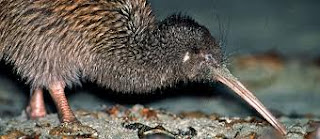











 St. George travelled for many months by land and sea until he came to Libya. Here he met a poor hermit who told him that everyone in that land was in great distress, for a dragon had long ravaged the country.
St. George travelled for many months by land and sea until he came to Libya. Here he met a poor hermit who told him that everyone in that land was in great distress, for a dragon had long ravaged the country.















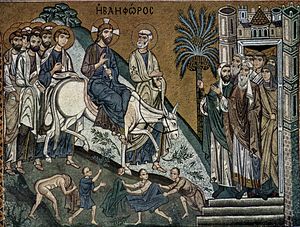













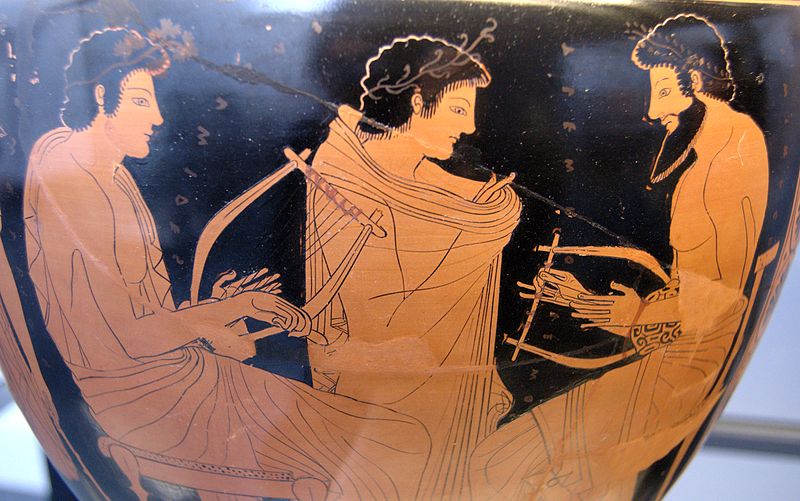
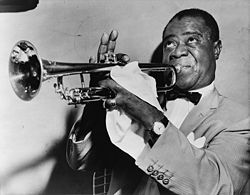





























































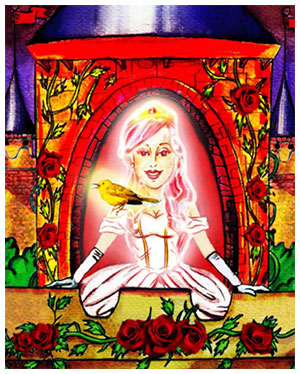
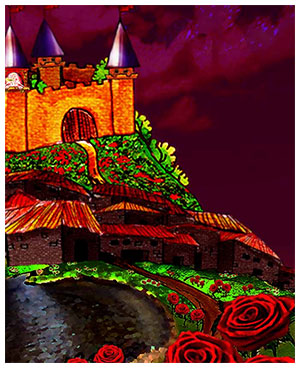
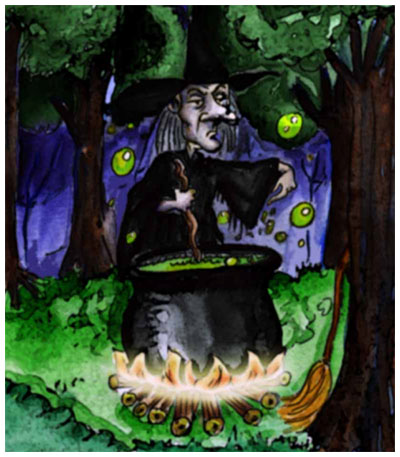
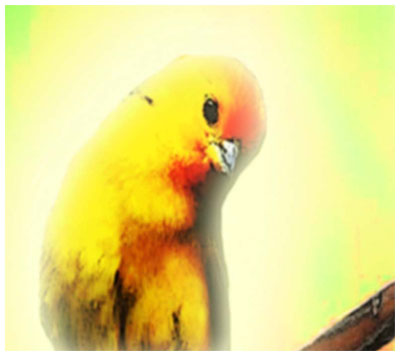
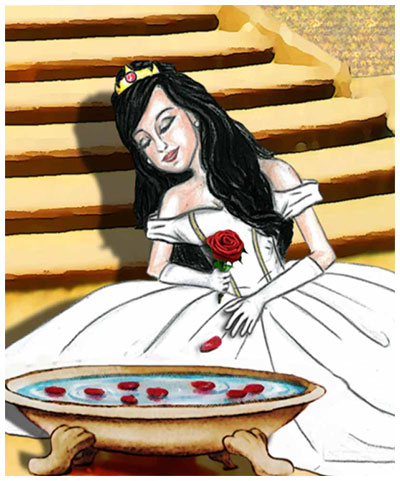

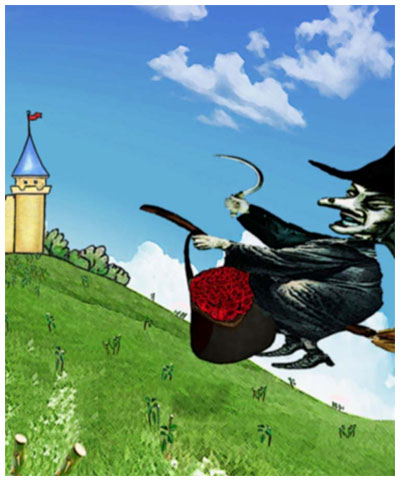
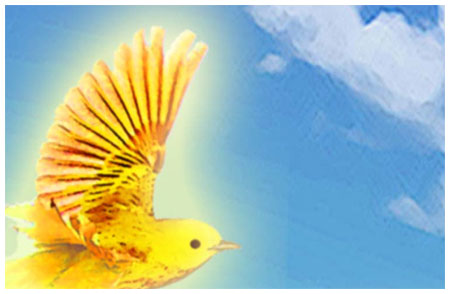
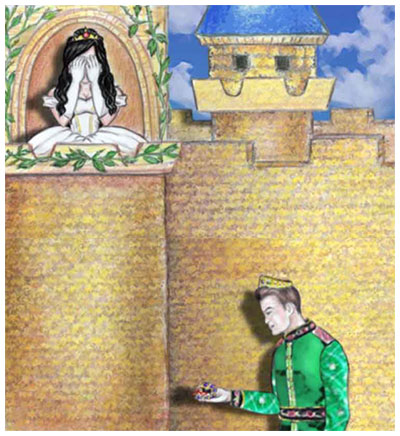
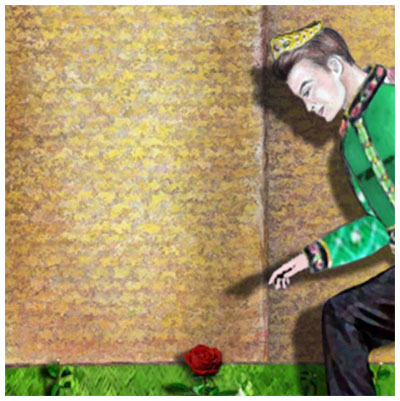
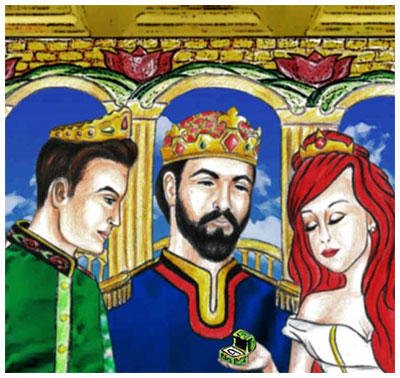
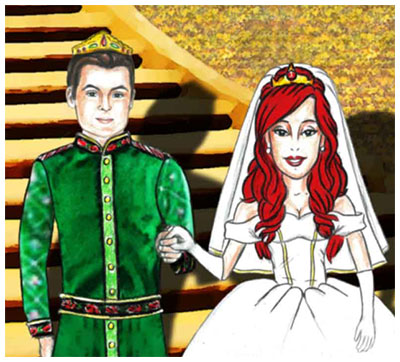













 Be aware of others' feelings
Be aware of others' feelings





















very interesting facts.well-done
ReplyDeleteკარგი თემებია.ყოჩაღ
ReplyDeletevery interesting facts and themes
ReplyDelete